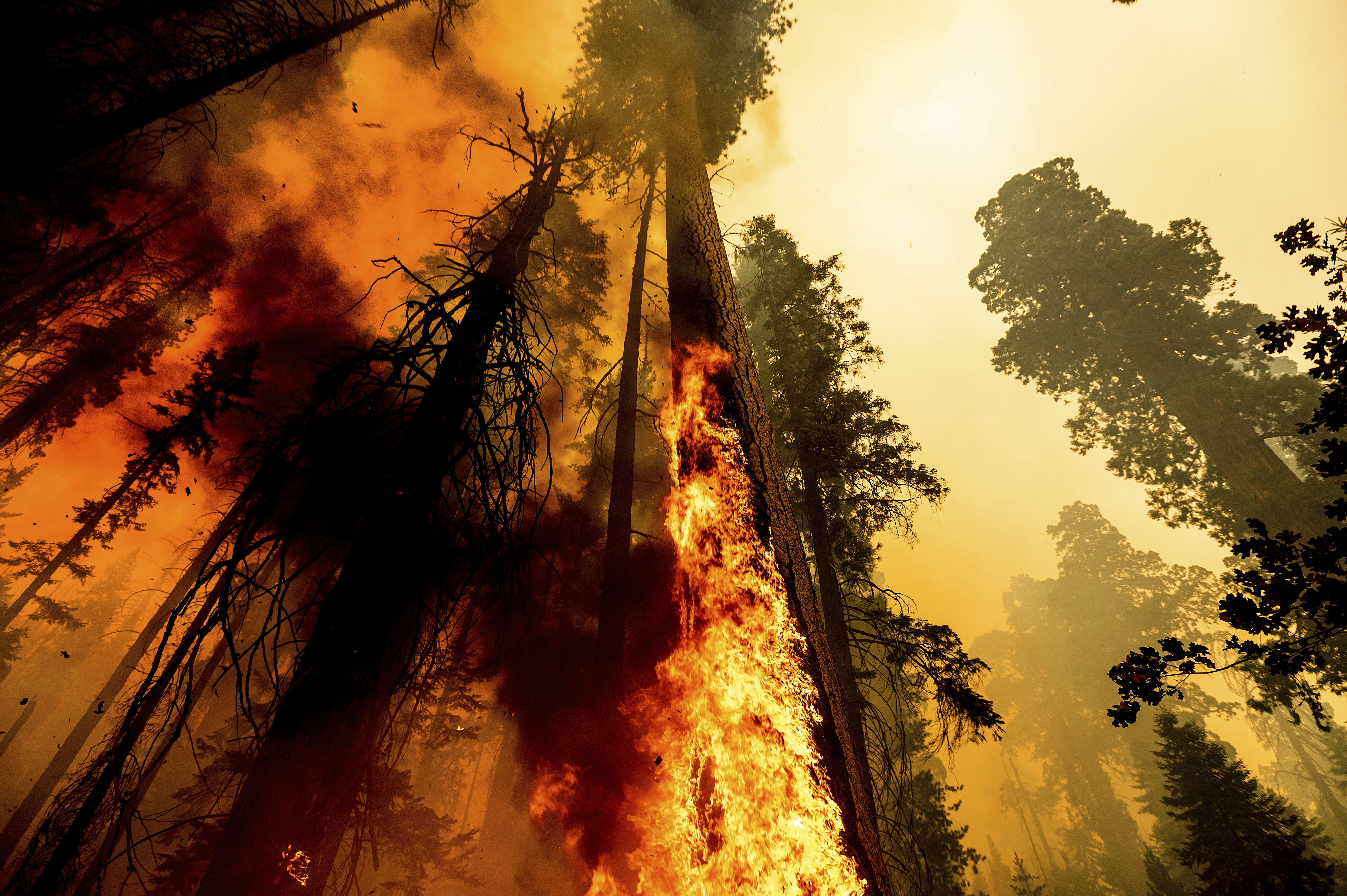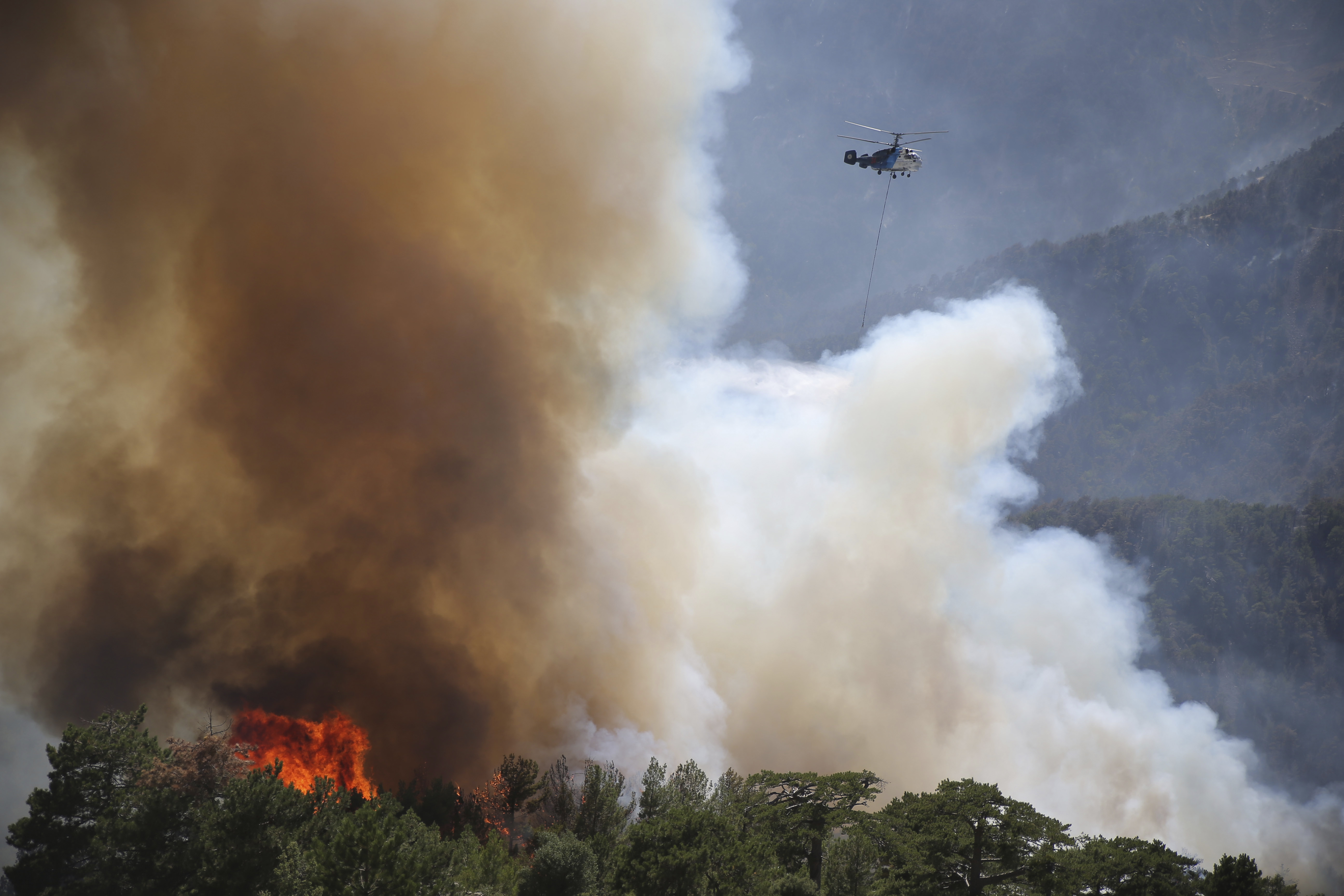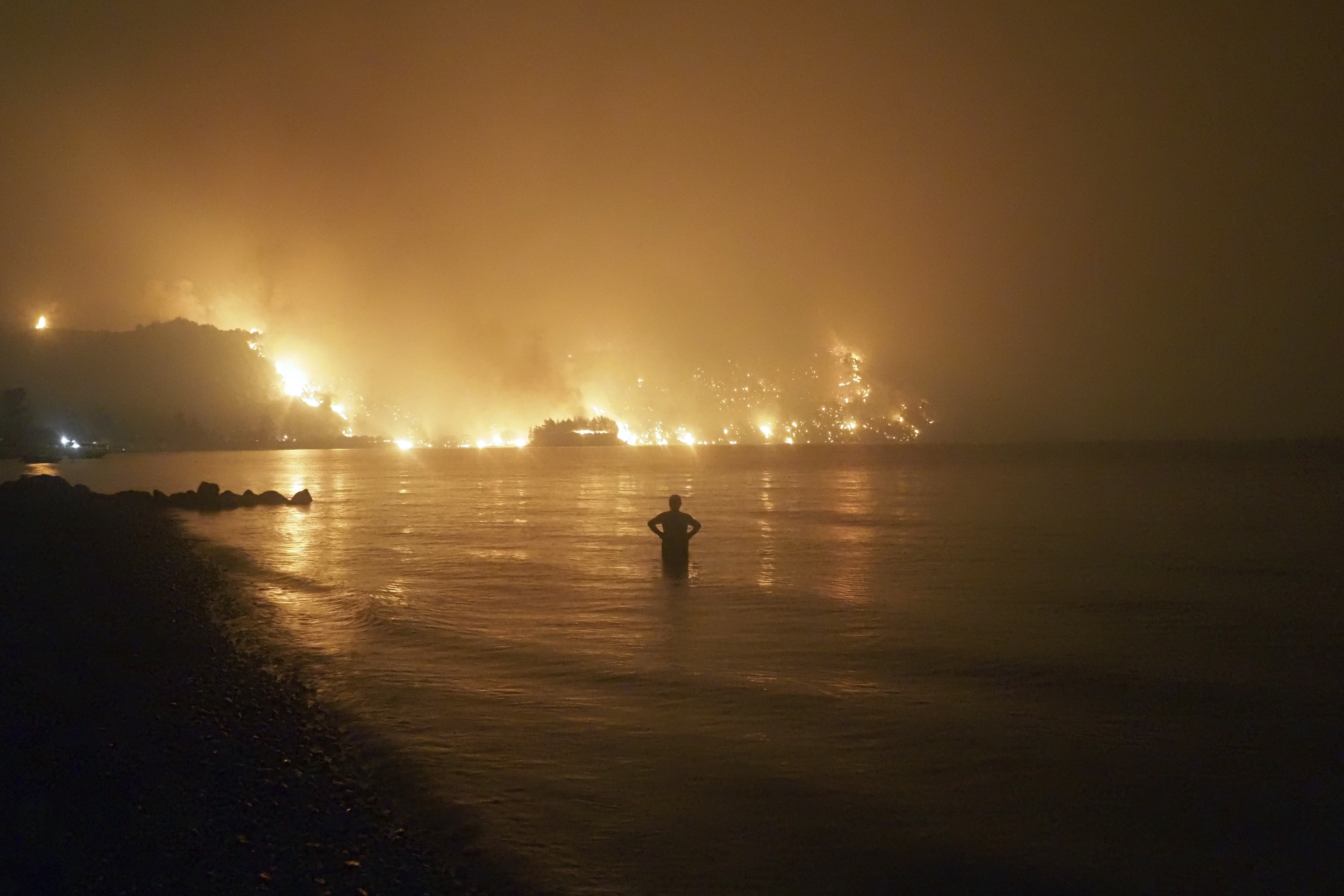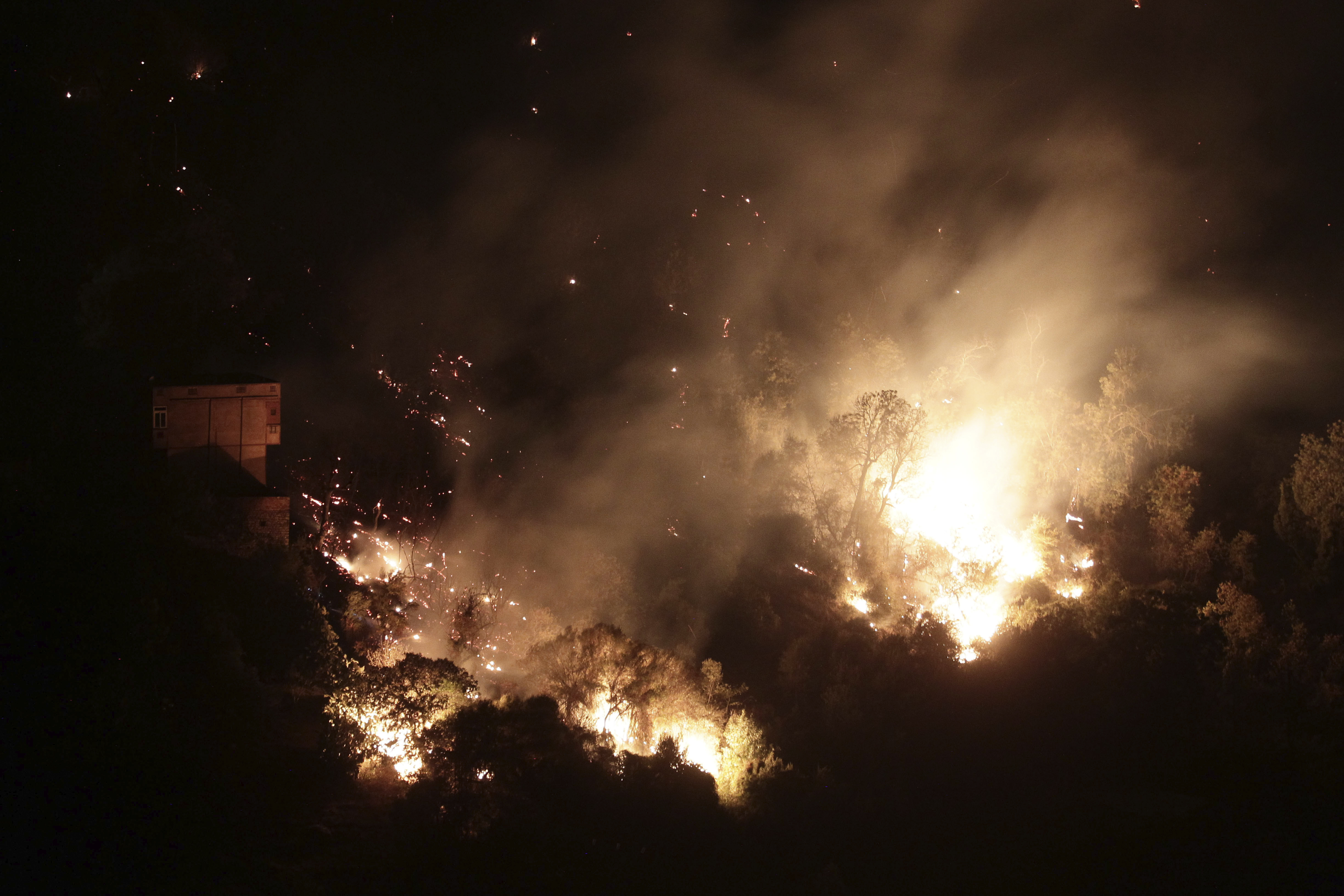
A wildfire burns in the Trail of 100 Giants grove in Sequoia National Forest, California. /Noah Berger/AFP
A wildfire burns in the Trail of 100 Giants grove in Sequoia National Forest, California. /Noah Berger/AFP
Wildfires across the globe, including in Siberia, North America and around the Mediterranean have caused record levels of Carbon Dioxide (CO2) emissions this summer, says the EU's Earth monitoring service.
Forests on fire emitted more than 2.5 billion tonnes of CO2, which is equivalent to India's annual emissions from all sources in July and August alone, according to the Copernicus Atmosphere Monitoring Service. More than half of CO2 emissions from wildfires came from North America and Siberia.
Heatwaves, drought conditions and reduced soil moisture amplified by global warming contributed to unprecedented fires in three continents. The Arctic Circle, which was also on fire, released some 66 million tonnes of CO2 from June through August, nearly a billion tonnes of which came from Russia.
"What stood out as unusual were the number of fires, the size of the area in which they were burning, their intensity, and also their persistence," Mark Parrington, senior scientist and wildfire expert at Copernicus Atmosphere Monitoring Service told AFP.
Why were there so many wildfires during the summer?
Fires started raging across northeastern Siberia in June and only started to abate in late August and early September, according to satellite-based monitoring from the service. Emissions from the region during that period were nearly double those of the year before.
Even though satellite images do not provide answers to how these fires start, many of the blazes are thought to have been caused by "zombie" fires that smoulder through the winter and then reignite. Rising temperatures and increased dryness as a result of changing rainfall patterns create ideal conditions for bush and forest fires.

A wildfire in Santa Coloma de Queralt, Spain, consumed more than 1,200 hectares of woodland. /AP/Joan Mateu Parra
A wildfire in Santa Coloma de Queralt, Spain, consumed more than 1,200 hectares of woodland. /AP/Joan Mateu Parra

A helicopter undertakes a wildfire extinguishing operation in Mugla, Turkey. /AP/Emre Tazegul
A helicopter undertakes a wildfire extinguishing operation in Mugla, Turkey. /AP/Emre Tazegul

A man watches the flames as wildfires approach Kochyli beach on the island of Evia, north of Athens in Greece. /AP Photo/Thodoris Nikolaou
A man watches the flames as wildfires approach Kochyli beach on the island of Evia, north of Athens in Greece. /AP Photo/Thodoris Nikolaou

A forest burns near Tizi Ouzou east of Algeria's capital of Algiers. /AP/Fateh Guidoum
A forest burns near Tizi Ouzou east of Algeria's capital of Algiers. /AP/Fateh Guidoum
The World Meteorological Organization has reported that the five-year period to 2020 was "unprecedented" for fires, particularly in Europe and North America.
In a draft report obtained by AFP, the United Nations' IPCC climate science advisory panel concluded: "Globally, increases in temperature and aridity have increased the length of fire seasons and doubled potential burnable area."
Wildfires have ravaged across most areas of the globe in 2021. The western U.S. and Canada's British Columbia posted record temperatures nearing 50 degrees Celsius and massive plumes of smoke from Siberia and North America reached across the Atlantic to parts of Britain and Europe.
Persistent heatwaves along the Mediterranean rim worsened uncontrolled wildfires. Turkey's daily fire intensity reached the highest levels ever recorded in a near 20-year dataset and other countries hit by out-of-control blazes included Greece, Italy, Spain, Portugal, Albania, North Macedonia, Algeria and Tunisia.
Source(s): AFP

